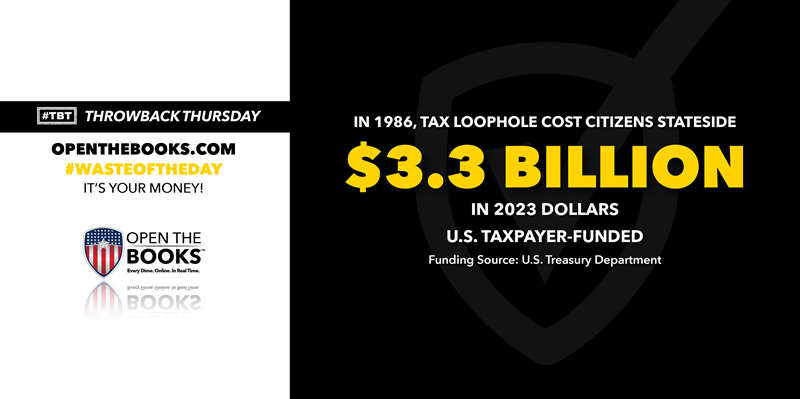
Homeless Damaged Hotel, Cost City of Los Angeles $94.5 Million
August 21, 2023

The number of homeless people in Los Angeles has increased so much that it necessitated housing people in the 294-room boutique Mayfair Hotel, where they caused $11.5 million in damage.
Homeless guests shattered windows, vandalized bathrooms, and tore carpet off the floor, The Los Angeles Times reported. The Mayfair Hotel participated in Project Roomkey, a federally funded program that turned LA hotels temporary homeless shelters.
The property damage was coupled with aggressive and violent behavior, with homeless people threatening staff, destroying property, screaming, and yelling obscenities. One instance relayed to the Times involved a male resident assaulting another resident and being escorted away by police.
The property damage to the hotel is costing the city $11.5 million, and the city plans to spend another $83 million to buy, renovate, and upgrade the property and convert it into homeless housing once again.
However, residents, business and property owners are objecting to the move, saying they don’t want to see the same conditions hurt their community again.
“The neighborhood is still recovering from Project Roomkey,” said Ruben Lares, who lives across from the hotel, The Times reported. “The purchase of the Mayfair would just completely destroy the community once again.”
At a recent townhall meeting, residents described seeing open-air drug use, discarded hypodermic needles, antisocial behavior, and criminal activity, The Times reported.
Mayor Karen Bass has said the hotel will be “completely different” from Project Roomkey once it is city-owned and coupled with critical social services. But it’s doubtful the planned relocating of people from Skid Row to the hotel will improve the neighborhood.
Cities spending tens of millions of dollars to house homeless individuals — in many cases, drug users — need to also consider the needs of the people who already live and work in those neighborhoods.
With $53 Billion Endowment, Harvard Encourages Students to Apply for Food Stamps
August 22, 2023

Even $53 billion isn’t enough for Harvard University to pay for its students’ food. The university with the world’s largest endowment is encouraging its graduate students to apply for food stamps, or Supplemental Nutrition Assistance Program (SNAP) benefits, run by the U.S. Department of Agriculture.
Harvard’s Health Services office recently circulated a flier to graduate students, encouraging them to participate in the SNAP program, Yahoo Finance reported. “Fuel your body & stock your pantry. Did you know that grad students may qualify for assistance paying for food & groceries?” the flyer read.
With a $53 billion endowment, Harvard pays its graduate students — who work for the university doing research and teaching classes, while getting their degree — $40,000. That’s often not enough to cover housing, food and other expenses, especially living in Cambridge, Mass, where the cost of living is 73% higher than the national average.
The Harvard Graduate Students Union argued the university should pay its approximately 4,000 graduate students more, so they don’t need SNAP. Average SNAP benefits are $121 per month, per person. If every one of the 4,000 graduate students received benefits, it would cost $484,000.
They have been on strike twice in recent years, in part due to the low pay from the university. A contract signed in 2020 promised graduate students a 2.8% pay raise. Surely a university with tens of billions of dollars can afford to pay its student workers more, instead of relying on the taxpayer-funded social safety net to subsidize its greed.
EPA Scope Grows, Budget Increases By $100 Billion
August 23, 2023

The U.S. Environmental Protection Agency has a straightforward mission “to protect human health and the environment - today and every day.” Yet its scope — and budget — keep increasing, costing taxpayers tens of billions of dollars.
A new oversight report from OpenTheBooks found that the agency has strayed from its founding in 1970, when it focused on matters like regulating toxic chemicals, environmental contaminants in air or water, what constitutes an environmental hazard, and what tools a government agency can use to enforce its undergirding principles.
“With over 15,000 staffers as of fiscal year 2022, the agency has law enforcement, homeland security, and legal teams working to enforce and develop environmental policies,” the report states. “In the past two years alone, Congress has appropriated the agency over $100 billion, much of it intended to bolster the agency’s decades-long vision of bringing about ‘environmental justice’.”
Last year, the average salary was $124,252, with the pay for all 15,043 employees totaling $1.9 billion. The EPA’s budget proposal for fiscal year 2024 asks for over 17,000 full-time equivalent staff.
The EPA now does so much more than protect water sources and clean up toxic waste sites. It has a law enforcement arm responsible for bringing environmental criminals to justice, and employs 137 special agents who have firearms and can arrest people.
Between 2018 and 2022, the EPA spent $618,602 on guns, ammunition, and military style equipment, including body armor, optical sights, night vision equipment, security vehicles, and tactical sets, kits, and outfits.
The 1,000-plus attorneys on its legal team make it large enough to rank as one of the largest law firms in the country.
The EPA's own inspector general said in a Congressional hearing that the agency had so much new funding that it could not be properly audited. Taxpayers should be concerned both with the size and scope of a federal agency and with its spending habits.
Throwback Thursday: In 1986, Tax Loopholes Cost $1.2B Annually
August 24, 2023

Throwback Thursday!
In 1986, the U.S. Treasury Department allowed large tax loopholes for citizens working overseas, costing Americans $1.2 billion a year — or approximately $3.3 billion in 2023 dollars — and earning the agency a Golden Fleece of the Month award.
Sen. William Proxmire, a Democrat from Wisconsin, gave awards to wasteful and nonsensical spending, eventually handing out 168 Golden Fleece Awards between 1975 and 1988.
The tax loophole allowed citizens living in foreign countries to exclude $70,000 of their income from income tax. “What a nice reward for working in London, or Paris or other hardship posts favored by big multinational corporations,” Proxmire said tongue-in-cheek.
“Charity may begin at home, but when it comes to tax breaks, they get a running start in the old country,” he said. “This loophole is enough to tax the patience of the long-suffering, home-bound taxpayer who may soon see his taxes increase.”
He noted that the loophole began a decade earlier, excluding $20,000 of income and costing the taxpayer $400 million. It since grew to $70,000 per overseas taxpayer, costing $1.2 billion.
“If this loophole were eliminated, [American executives] would have to become lean and mean, instead of fat and sassy,” Proxmire said. “That would be difficult for them but good for the country. And we could sure use that $1.2 billion.”
LA, Other Cities Pay for Security for Mayors Who Cut Police
August 25, 2023

Police departments in Los Angeles, Denver, Milwaukee, and Minneapolis provide expensive security details for mayors and other city officials even as those mayors cut funding and positions in those departments.
The Los Angeles Police Department’s more than $1.8 billion budget was initially cut by $150 million in 2020 (a portion of the cut was restored in 2021), eliminating about 500 officer jobs.
In 2020, while the police department budgeted for 10,000 officers, it had 9,985. By 2021, the LAPD had 9,503 sworn officers, The Los Angeles Times reported.
“The LAPD is hemorrhaging officers, with more leaving the force than are joining it,” as the LA Times put it.
Now down to 9,100 officers, the city’s 2023-24 budget funds a $1.9 billion LAPD budget with 9,504 officers, aiming to increase the ranks by offering a $15,000 sign-on bonus for new hires and officers joining the LAPD from other departments.
Former mayor Eric Garcetti oversaw the city as the police department shrank, and cut its budget by $150 million, but the current mayor, Karen Bass, pledges to build it back up again.
While the department was dwindling, Garcetti, the city attorney, and chief of police each received security details, costing $17 million over six years.
In 2015, police officers providing security for the city officials cost $2.5 million; $2.8 million in 2016; $3.2 million in 2017; $3 million in 2018; $2.9 million in 2019; and $2.6 million in 2020.
Those figures were given to OpenTheBooks in June 2023 after we filed a California Public Records Act request in May 2021. Asked for updated records for 2021 and 2022, the LAPD said we would have to file a new request.
Other cities also cut police budgets and jobs while keeping police as security details for city leaders.
The Milwaukee mayor cut 120 police officers in 2021, mostly through attrition and not hiring new officers, cutting about $430,000 from the overall budget. That followed 60 police jobs cut in 2020. Now, the police force is facing a 25% cut due toa city budget crisis that has Milwaukee facing bankruptcy. The massive cut to the police force could include cutting hundreds of positions, dissolving the traffic safety unit, removing the overnight shift at District 4, and dissolving District 6 altogether.
Between 2015 and 2020, Milwaukee spent $2.8 million giving its officials security details.
In Denver, police positions have been cut. About 200 positions were unfunded between the 2019-2020 budget and the following year. While the 2023 budget funded 1,850 positions in the Denver Police Department — more than the previous two years — it’s less than those before it.
City officials removed police from schools. Police were also removed from casesresponding to mental health calls, with health care workers responding instead. Between 2015 and 2020, Denver spent $4.2 million paying for its mayor’s security detail.
Similarly, Minneapolis, where George Floyd was killed, cut $8 million from the police in 2021 to launch a mental health team to respond to certain 911 calls. “A third of the police force has quit, retired, or gone on leave with few replacements,” Minneapolis Post reported in December 2022.
Since 2020, hundreds of police officers left Minneapolis police, with the force shrinking from around 900 officers in 2020 to 560 in August 2022. Between 2015 and 2020, Minneapolis spent $865,000 paying for its mayor’s security detail.
The #WasteOfTheDay is presented by the forensic auditors at OpenTheBooks.com.